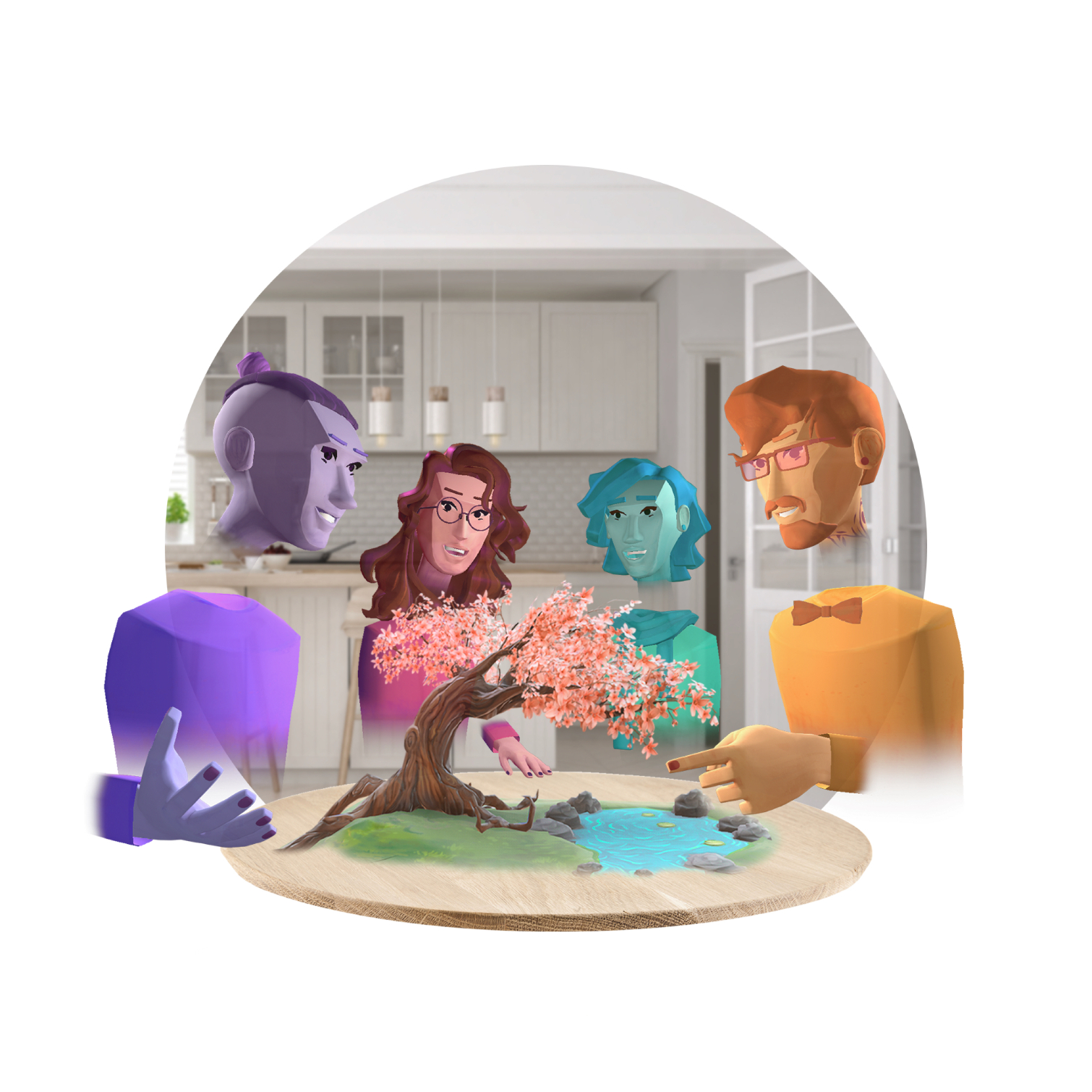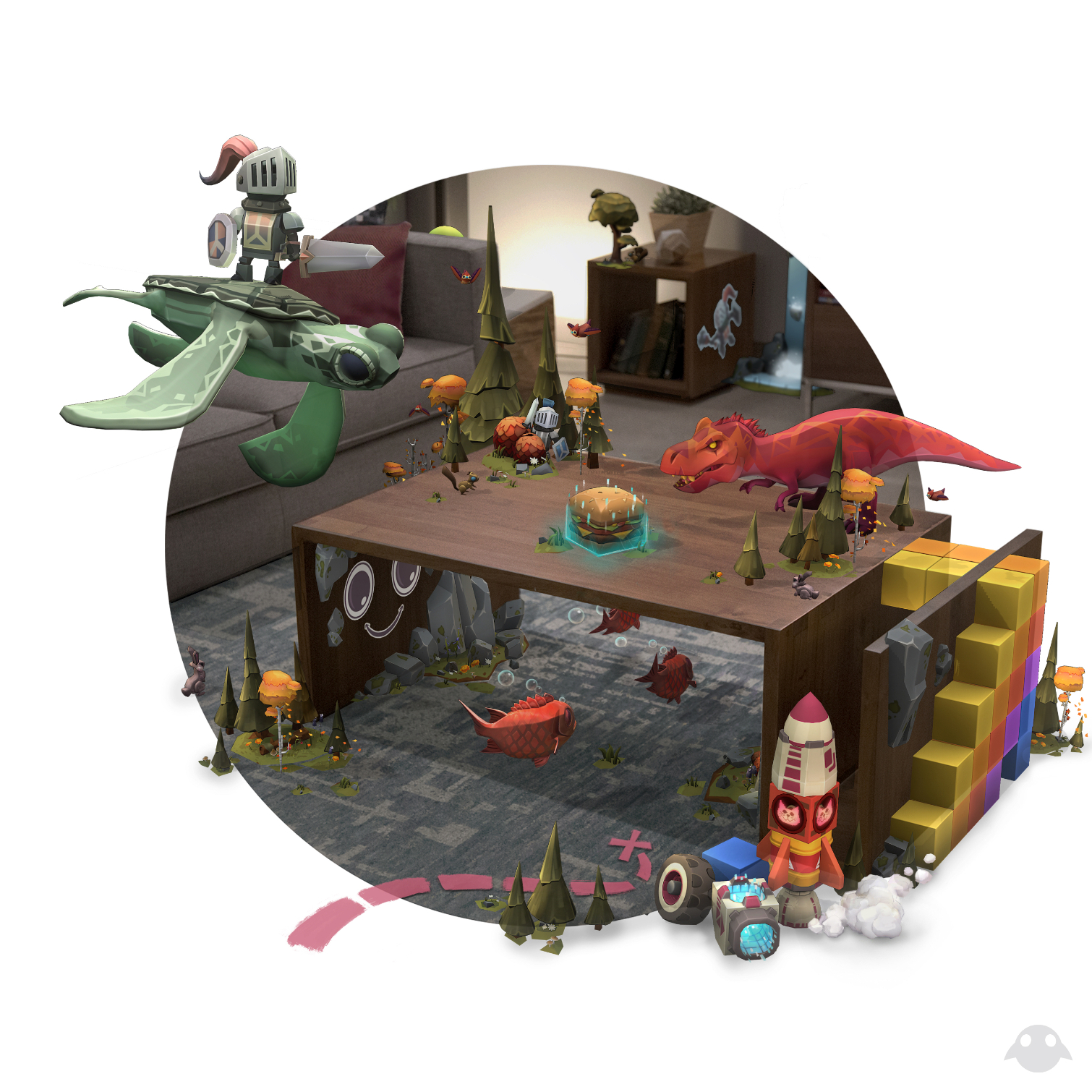Magic Leap Finally Reveals Hardware, Dev Kits Ship Early 2018
Magic Leap has been around for many years, but it's just now revealing its first product. Rony Abovitz founded the company in 2010, and he first demonstrated some of the technology his company was developing at the 2011 San Diego Comic Con. Since then, Magic Leap has been in the news many times for the incredible amount of funding it secured from a variety of high-profile investors. In 2014, Google invested half a billion dollars, and in February 2016, the company secured another $793 million in Series C funding. The large investments in Magic Leap’s infrastructure before the company even announced a product left the world questioning what it could possibly be brewing behind closed doors.
Today, Magic Leap revealed the first images and details of the product it plans to ship in the coming months. The Magic Leap One headset is an augmented reality device that takes advantage of Magic Leap’s advanced Digital Lightfield technology, which seamlessly merges digital content with the real world. Magic Leap said it uses Lightfield Photonics to generate digital light that blends seamlessly with the real-world lighting.
Magic Leap is treating the first iteration of its headset as somewhat of a developer kit. The company said that the Magic Leap One Creator Edition headset would be available for creators in early 2018, but it has not mentioned plans for a consumer rollout of the device. Despite Magic Leap’s intention to launch the product as a developer kit first, it's clear from the product shots that the Magic Leap One headset is a well refined device. Unlike Oculus’ first developer kit models, the Magic Leap One headset appears ready for the mass market.
The Magic Leap One headset comes in a surprising form factor. Critics of AR and VR have often said that the devices must be less bulky and resemble a pair of glasses. The Magic Leap One isn’t quite as compact as a pair of glasses, but it shares a similar form factor. The device rests on the bridge of your nose and features a headband that wraps around your head.
The Magic Leap One headset is bulkier than a pair of glasses, but it’s more compact than any AR or VR hardware we’ve ever tried. It’s also one of the few self-contained AR devices, which is an impressive feat. Magic Leap managed to keep the headset compact by separating the compute module from the headset. The headset includes a tethered device you can clip to your belt that houses the CPU, GPU, and other components.





Magic Leap has not revealed the specifications of the tethered computing device, and we don’t know enough about it even to speculate. The tethered device doesn’t look large enough to house laptop-class hardware, but Magic Leap claimed that it delivers laptop-like performance. We’re not sure what to make of that claim. However, if the device is powered by a Qualcomm Snapdragon SoC (likely), Magic Leap’s marketing team could simply be capitalizing on the recent reveal of Qualcomm Snapdragon-powered Windows laptops.
The Magic Leap One headset features two transparent lenses that don’t cut you off from the real world like a VR headset. The company hasn’t released detailed specifics of their functions, but the frame around the lenses features eight sensors on the front of the Magic Leap One headset, which provide spatial tracking (provided by Dacuda’s 3D scanning technology), hand tracking, and object awareness.
Get Tom's Hardware's best news and in-depth reviews, straight to your inbox.
The Magic Leap One headset also supports “Soundfield Audio,” which is to say that the platform can calculate how audio should interact with the physical world. Magic Leap didn’t explain Soundfield Audio in depth, but we get the impression it is similar to Nvidia’s VRWorks Audio and AMD’s TrueAudio Next technologies, which use physics to calculate accurate audio reproduction based on your surroundings.
Magic Leap spent years behind closed doors refining its technology and developing hardware. Now, the platform needs content to make it a desirable product for the average person. Magic Leap said that an SDK with tools, documentation, and learning resources would be available early next year. The company also plans to offer direct support to help creators get started.
Content creators interested in getting their hands on Magic Leap’s technology can sign up today to be notified when the Magic Leap One Creators Edition headset is available.
Kevin Carbotte is a contributing writer for Tom's Hardware who primarily covers VR and AR hardware. He has been writing for us for more than four years.
-
dark_lord69 "Now, the platform needs content to make it a desirable product for the average person."Reply
Sorry, but if you're an augmented reality creator the Windows AR platform would seem much more appealing. I'm afraid despite it's technological advancements the Windows AR platform has a much bigger market share. Unless there are some amazing programs/applications made for this I expect their tech to be purchased by a bigger company. (It does sound pretty cool though.) -
none12345 Hey look its 'happy' glasses from Mark Osborne's MORE(search "Mark Osborne's MORE " in youtube if you dont know of it). Is that the goal of this tech? To make an increasingly dystopian world look more appealing.Reply
In any case....looks pretty dumb, no thanks. The tech could be cool for learning and children i guess. But man the design is dumb, needs much work. -
bit_user Reply
Employees were previously seen using Nvidia Tegra X1 development boards, so odds are that it's using a Tegra X2 or even Xavier. Both have much more powerful GPUs than anything available from Qualcomm or Intel, and Lightfield rendering is extremely GPU-intensive. In fact, I recall reading speculation that the lack of portable GPU horsepower was one of the things holding them back.20503242 said:Magic Leap claimed that it delivers laptop-like performance. We’re not sure what to make of that claim. However, if the device is powered by a Qualcomm Snapdragon SoC (likely), Magic Leap’s marketing team could simply be capitalizing on the recent reveal of Qualcomm Snapdragon-powered Windows laptops.
-
bit_user Without trying it, there's no way to properly understand the gulf between Magic Leap and everything else. Everyone who has tried it says it really lives up to the hype.Reply
By using lightfields, the rendered imagery should match the depth of field of everything else you see. By contrast, Hololens renders its imagery at a fixed focal distance (in spite of the stereoscopic distance) and this limits it to a fairly narrow range of apparent depths at which it can place CG objects.
With over $1.4B invested, there aren't many companies who can & would buy them, but I'd rather see Apple snap them up than Alibaba (their biggest investor).
